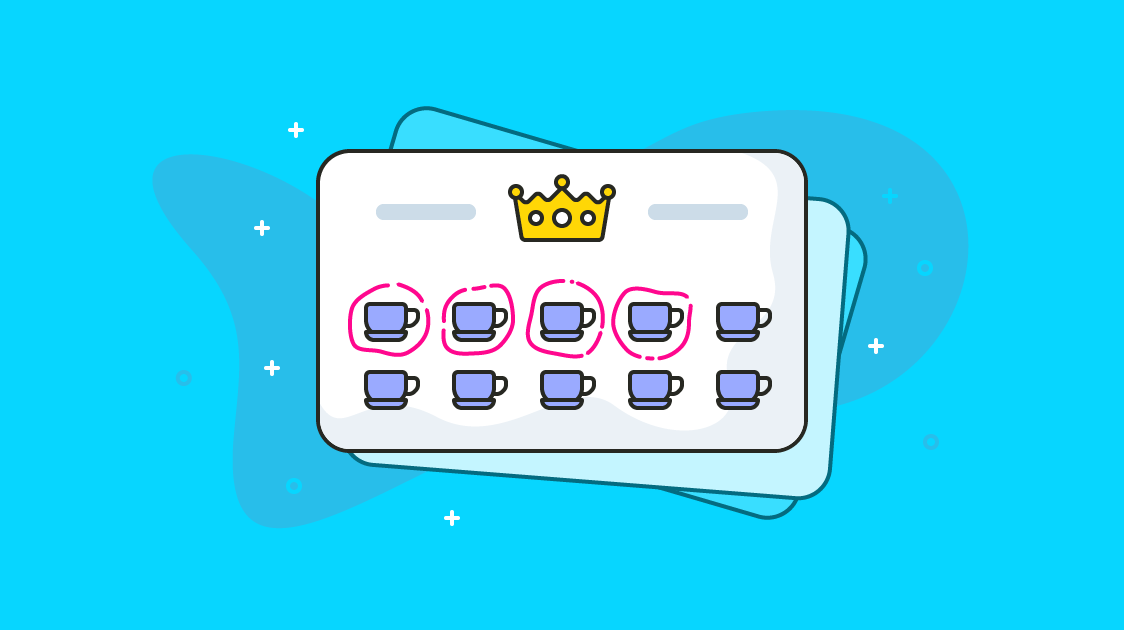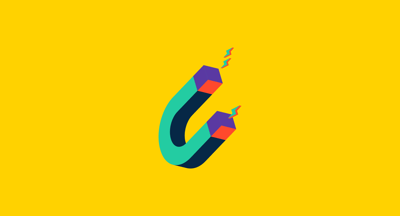September 11, 2025
 by Harshita Tewari / September 11, 2025
by Harshita Tewari / September 11, 2025

If there's one thing working in marketing has taught me, it's that keeping existing customers engaged is just as important, if not more, than bringing in new ones.What I realized is that the difference often comes down to the technology behind the scenes. The best loyalty programs aren't just creative; they're powered by software that makes personalization, multi-channel engagement, and real-time insights possible.
To see firsthand what sets the best customer loyalty software apart, I tested a range of platforms, exploring features like multi-channel engagement, CRM and marketing integrations, and real-time reporting.
If you’re searching for top-rated loyalty program apps for customer retention, here are my top five picks for 2025. Whether you're managing loyalty across an online store, retail locations, or mobile apps, these five solutions stood out for their flexibility, scalability, and ability to turn casual customers into brand advocates.
LoyaltyLion: Best for customizable loyalty programs with e-commerce integrations
Powerful platform to build tailored loyalty experiences, offering seamless integrations with leading e-commerce platforms. (plans start at $199/mo)
Smile.io: Best for easy-to-launch points, referrals, and VIP programs
User-friendly and affordable solution for brands wanting to quickly set up loyalty rewards, referral campaigns, and VIP tiers. (plans start at $49/mo)
Salesforce Loyalty Management: Best for enterprise loyalty program automation
Enterprise-grade solution designed for scalability, enabling advanced automation and deep integration with the Salesforce ecosystem. (plans start at $25/mo)
Voyado: Best for loyalty and marketing automation for retailers
Comprehensive platform combining loyalty, customer data, and marketing automation, especially tailored for retail businesses. (pricing available upon request)
Yotpo: Best all-in-one platform for loyalty, SMS, reviews, and subscriptions
A robust suite that unifies loyalty with customer reviews, subscriptions, and SMS marketing in one ecosystem. (plans start at $79/mo)
*These loyalty management software are top-rated in their category, according to G2's Spring 2025 Grid Report. I’ve also added their monthly pricing to make comparisons easier for you.
Customer loyalty isn’t something you can buy with discounts or freebies. Building real loyalty means consistently delivering seamless experiences, personalized rewards, and incentives that matter to your customers across every channel—because loyalty isn’t just feel-good marketing. In fact, loyalty program members spend, on average, up to 164% more than non-members when redeeming rewards.
But after working on loyalty campaigns and delving deeper into customer engagement strategies, I realized that not every loyalty platform delivers on its promises.
So, I wanted to find platforms that help marketing teams personalize experiences, drive repeat business, and build stronger customer relationships. Here’s how I approached it.
I started by reviewing G2’s latest Grid Reports to see which platforms consistently performed well in terms of usability, feature completeness, and overall satisfaction. This gave me a strong baseline of trusted tools marketers already lean on.
From there, I narrowed my list by getting hands-on experience with the features and workflows. For solutions where testing wasn't entirely possible, I leaned on verified G2 user feedback, product demos, and vendor documentation to understand real-world performance and limitations. I also used AI-powered analysis to scan hundreds of user reviews to surface common praise points and recurring frustrations.
Throughout testing, I focused on the experience through a marketing lens: Was the platform intuitive? Did it make it easier to launch and manage loyalty campaigns? Could it support real personalization without requiring a massive IT lift? And most importantly, would it fit seamlessly into a modern marketing tech stack?
Screenshots in this article are a mix of my testing visuals and verified vendor images on G2.
I considered the following factors when evaluating the best customer loyalty software.
The list below contains genuine user reviews from the loyalty management software category page. To be included in this category, a solution must:
*This data was pulled from G2 in 2025. Some reviews may have been edited for clarity.
Among the leading loyalty management platforms for e-commerce, LoyaltyLion consistently stands out. It is designed for e-commerce brands that want to increase repeat purchases and customer lifetime value. According to G2 Data, 74% of small businesses use LoyaltyLion, which speaks to its ease of use.
It offers tools for setting up point systems, referral programs, and VIP tiers, focusing on integrating loyalty directly into the online shopping experience.
When I tested LoyaltyLion, one of the first things that stood out was how seamlessly it integrates with Shopify. Setting up the connection was straightforward, and the platform automatically pulls in key customer and order data without needing complex configurations. Managing loyalty rules, setting up reward tiers, and syncing customer activities come naturally. If you’re running an e-commerce store on Shopify or a similar platform, LoyaltyLion makes it incredibly easy to layer loyalty incentives into your customer journey.
Another major highlight during testing was the onboarding process. LoyaltyLion doesn’t just hand you a platform and leave you to figure it out; they guide you through it. I had access to structured onboarding sessions, a friendly and knowledgeable support team, and clear documentation that made configuring my first loyalty program pretty easy.
I also found the way LoyaltyLion handles rewards and points logic refreshingly simple. Setting up rules around points for purchases, referrals, or social media interactions was easy, and I appreciated how visible rewards were for customers. It didn't feel like another points engine buried somewhere in the shopping flow. The incentives were front and center, making it easy to reinforce customer behavior.

That said, LoyaltyLion does come with a few trade-offs. While the platform covers the essentials, deeper customization options were somewhat limited unless you moved into more advanced (and often higher-priced) tiers. If you want experiences like intricate gamification elements or heavily branded program interfaces, you may wish for a little more flexibility outside the box.
Cost is another consideration. While LoyaltyLion delivers strong business value, it can get expensive as your loyalty program scales. Some premium features are reserved for higher plans, which could stretch budgets for fast-growing brands or smaller shops. This concern was not only my observation; many reviewers on G2 shared similar thoughts about the platform's pricing structure. However, numerous users felt that the platform’s reliability, customer support, and long-term benefits for customer retention justified the investment.
“We use it together with Shopify and Klaviyo, and the integration is impeccable. Also, the data gives great insights into the evolution of the programme and is incredibly simple to use and understand. The customer service is superb. I would totally recommend it to anyone looking to offer an easy-to-use and manage loyalty programme.”
- LoyaltyLion - loyalty platform Review, Javier M.
“There are areas where LoyaltyLion could improve. One significant drawback is the presence of certain features that may not be relevant to all businesses and cannot be easily customized or removed. This lack of flexibility can frustrate companies looking for a more tailored solution.”
- LoyaltyLion - loyalty platform Review, Raika B.
Related: Want to see why loyalty matters? Explore key customer retention stats that show just how much keeping customers can boost your bottom line.
Smile.io is designed for e-commerce brands looking to build simple, engaging customer rewards programs. According to G2 Data, it ranks at position 1 of the easiest-to-use software in the category.
When I tested Smile.io, the first thing that impressed me was how quickly I could set up a working loyalty program. Connecting it to a Shopify store took just a few clicks, and it was easy to configure earning rules, rewards, and customer communications. This makes Smile.io one of the most effective loyalty management tools for startups. It’s a great option if you want to get a loyalty program up and running without dedicating days to setup or onboarding.
Smile.io’s Shopify integration felt seamless during my testing. Customer data synced smoothly, and loyalty features like points balances, reward notifications, and program enrollment were integrated into the storefront experience without any complicated setup. Everything stayed on-brand and easy to manage, which is exactly what you want when adding loyalty to an already busy e-commerce operation.
I also liked how customer-friendly the rewards system felt. From a shopper’s perspective, Smile.io made it obvious how to earn points, what rewards were available, and how to redeem them. There was no hidden fine print or confusing navigation. Customers could engage with the loyalty program naturally during checkout or while browsing their account dashboard, which can make a big difference in actual reward redemption rates.

However, Smile.io does have some limitations to be aware of. When I tried customizing reward structures and notifications beyond the basics, I found the options a bit limited. The defaults are clean and easy to use, but businesses looking for highly branded, deeply personalized loyalty experiences may find themselves restricted without custom development or workarounds.
It’s also worth noting that some of Smile.io’s more advanced features, like advanced VIP tiers, custom earning conditions, or deeper analytics, are gated behind higher-tier paid plans. While the core platform is very accessible for growing brands, teams that want to build a highly sophisticated loyalty program might need to upgrade sooner than expected. That said, Smile.io is often considered the best user-friendly loyalty management system for new businesses
“This is a very easy-to-set-up and easy-to-use program as an admin. It is also very user-friendly for our customers. They can easily log in and access their points, earn more points, redeem for our discounts, and see any discounts they have previously redeemed but not yet used. Recently, I was having an issue with a function not working properly on my POS (user error), and their customer service was so quick and kind in helping me correct the issue and get it working correctly. They even followed up a day or two later to make sure that everything was still working as expected (it was). I really appreciated that level of service. As a small business owner, I wear a lot of hats and don't have time to spend hours going back and forth with a vendor when something goes wrong, so the fact that they were able to quickly resolve the issue and then make sure that everything was ok a few days later was amazing.”
- Smile.io Review, Ashleigh B.
“I think Smile is a bit expensive. For many years, we were able to be on the free plan, which was very nice, but now I think it's a little overpriced. Also, we don't see customers using the program as much as we would like, and sometimes they don't use it enough to justify the cost of the subscription.”
- Smile.io Review, Michaela M.
Related: Building loyalty is only part of the story. Learn how customer marketing strategies can turn one-time buyers into lifelong brand advocates.
Salesforce Loyalty Management is an enterprise-grade platform built for companies that want to create personalized, data-driven loyalty programs at scale. According to G2 Data, it's the go-to choice for 63% mid-market businesses.
It integrates deeply with Salesforce CRM, Marketing Cloud, and Service Cloud, helping brands connect loyalty initiatives with their broader customer engagement strategies.
When I tested Salesforce Loyalty Management, one of the first things I appreciated was how easy it was to configure once the initial setup was complete. While Salesforce platforms can sometimes feel intimidating, Loyalty Management offers clear workflows and templates that make it relatively straightforward to create earning rules, build reward tiers, and launch loyalty journeys without getting buried in complexity. Having everything organized within the familiar Salesforce environment helped make the process even smoother.
Managing loyalty programs inside Salesforce felt surprisingly natural. I could segment customers based on their behaviors, automate reward triggers, and personalize experiences across channels like email, mobile, and service interactions.
While I didn’t personally interact with the support team during testing, G2 reviewers consistently praised Salesforce’s loyalty-specific support as a strong point. Many users praised the availability of detailed documentation, responsive assistance, and knowledgeable support reps who understood the nuances of loyalty program management. For teams managing complex loyalty setups, having reliable support appears to make a real difference in smoothing out the learning curve.

That said, pricing can be a significant consideration. Salesforce Loyalty Management is positioned for mid-sized to large enterprises, and the costs, especially when bundled with extra Salesforce products, can add up quickly. For smaller businesses or teams just starting with loyalty programs, it might feel like more firepower (and more budget) than you need.
During testing, I also encountered occasional lag when working through more complex processes or syncing large datasets. It wasn’t a constant issue, but sometimes saving configurations or loading detailed dashboards took longer than expected.
“Salesforce Loyalty Management is very easy to set up and customize. It allows tracking organizations' loyal members' activity and adds scoring based on customer loyalty. It also doesn't require any coding knowledge to create loyalty programs.”
- Salesforce Loyalty Management Review, Harsh P.
“Lacks enough flexibility to adapt to a wider range of customer profiles."
- Salesforce Loyalty Management Review, Joana N.
Related: Customer loyalty gets even more important when budgets tighten. Find out how to manage churn and keep your best customers through tough economic times.
Voyado is built primarily for retail and e-commerce brands. It combines loyalty management, marketing automation, and customer insights into one solution. The tool makes it easy for marketing teams to deliver personalized campaigns across multiple channels without relying heavily on external tools or complex configurations.
When I tested Voyado, one of the first things that stood out was how intuitive the platform felt. The interface was clean and easy to navigate, making it simple to create campaigns, manage loyalty rewards, and set up automation flows without needing technical expertise. G2 reviewers echoed this as well, consistently praising Voyado for its ease of use and user-friendly design that helps teams get up and running quickly.
Voyado’s automation capabilities also stood out during my evaluation. Setting up automated reward programs, re-engagement campaigns, and personalized offers based on customer behavior felt straightforward and flexible. Based on my testing and G2 user feedback, Voyado’s automation tools seem to strike a strong balance between simplicity and power, helping marketers build sophisticated engagement flows without needing heavy technical support. In fact, 96% G2 users value it for its performance and reliability.
I also appreciated how Voyado surfaces customer insights. While the data isn’t as deep, it provides practical visibility into customer behavior, purchase patterns, and loyalty trends. G2 reviewers often mentioned that these built-in insights made it easier to act quickly without toggling between multiple tools.

There are a few limitations to keep in mind, though. Reporting capabilities felt basic during my testing, and many G2 reviewers shared the same sentiment. While you can pull core loyalty and campaign metrics easily enough, the platform doesn’t offer as much flexibility when building custom reports or drilling down into detailed segmentation and performance tracking.
Similarly, while Voyado provides helpful customer insights, several G2 reviews flagged that data depth can sometimes feel a little shallow. If you’ve been asking what the best loyalty software for retail stores is, Voyado is one of the strongest contenders
“What I like best about Voyado is their hands-on approach and helpful team. Not only is the platform easy to navigate and work in, but the team is incredibly supportive when it comes to strategizing campaigns and answering any questions I have. Their guidance has made it easy for me to get the most out of the CRM platform.”
- Voyado Review, Elin T.
“The only downside concerns the platform's current limited capabilities for advanced analysis. However, Voyado is transparent about this and offers plug-ins for customers who require such features.”
- Voyado Review, Tobias F.
Yotpo helps brands build trust, drive repeat purchases, and manage customer engagement across multiple touchpoints without juggling multiple vendors. Yotpo focuses heavily on connecting loyalty and review efforts into one unified customer experience.
I immediately noticed how well the platform integrates different customer engagement pieces. Managing reviews, loyalty programs, and customer rewards from the same dashboard made the workflow much more streamlined than platforms that only focus on one area.
Ease of use was another clear highlight during my testing. Navigating between modules like setting up a loyalty campaign, responding to customer reviews, or configuring reward rules felt intuitive and didn’t require much technical ramp-up. Despite multiple products under one roof, Yotpo maintains a relatively clean and accessible user interface. 87% of G2 users report that the dashboard works as a centralized hub for online reputation data.
Another thing I observed during my research was praise for the support team. While I didn't get to examine the customer support, many G2 reviewers said the team was responsive and helpful, especially when dealing with setup questions or troubleshooting integration challenges. That external validation made me feel more confident that teams can rely on Yotpo’s support resources when needed.

However, I noticed occasional slowness while using Yotpo’s admin portal, and it’s something G2 reviewers flagged, too. Saving changes, loading reports, or navigating between heavier modules sometimes took longer than expected. While it wasn’t deal-breaking, it could be bothersome if you’re trying to manage a lot of campaigns quickly.
Pricing is another factor to consider. Yotpo’s ecosystem offers powerful capabilities, but several G2 users mentioned that accessing the full suite of features often requires upgrading to higher-tier plans or adding paid modules. From what I saw, it’s a platform that works best for brands ready to invest heavily in loyalty, reviews, and customer marketing.
All in all, Yotpo is a recommended loyalty app for increasing customer loyalty, thanks to its all-in-one ecosystem of reviews, rewards, and SMS marketing
“That it is everything under one hood - loyalty and referral, reviews and UGC management. Customer support has been great! Easy to use when setting up a campaign (loyalty).”
- Yotpo Review, Katina V.
"The only thing I don't necessarily like is that I can't block numbers from subscribing. There are some customers I don't want back on the platforms, and it's not easy to block them.”
- Yotpo Review, Carmela H.
Yotpo works well for service businesses that want to combine loyalty programs with customer reviews and engagement tools. It’s especially effective for businesses using platforms like Shopify or BigCommerce, helping turn customers into repeat buyers.
Smile.io is the best choice for small businesses. It’s easy to set up, affordable, and integrates seamlessly with Shopify. It allows brands to quickly launch points, referral, and VIP programs without heavy technical setup.
LoyaltyLion, Smile.io, Salesforce Loyalty Management, Voyado, and Yotpo are the top-rated apps for 2025. Each platform enables multi-channel engagement, personalized rewards, and drives repeat purchases effectively.
Smile.io is the most effective tool for startups. It offers fast setup, user-friendly design, and simple integrations, allowing new businesses to run loyalty programs without extensive technical resources.
Voyado is the strongest choice for retail stores. It combines loyalty management, marketing automation, and customer insights, making it easy to run personalized campaigns across multiple channels.
Yotpo is highly recommended. It's an all-in-one platform that unites loyalty programs, customer reviews, SMS marketing, and subscriptions, helping brands build long-term loyalty and repeat business.
LoyaltyLion, Smile.io, and Yotpo are leading e-commerce platforms. They provide customizable rewards programs, multi-channel engagement, and seamless integration with platforms like Shopify, enhancing customer retention.
LoyaltyLion and Smile.io lead the pack. Both integrate smoothly with Shopify, are highly rated for ease of use, and provide effective tools for points, referral programs, and VIP rewards.
LoyaltyLion, Voyado, and Yotpo are highly recommended. Each helps turn casual customers into loyal buyers with personalized rewards, automated campaigns, and insightful reporting.
Smile.io stands out for new businesses. It’s simple to set up, easy for customers to use, and provides all the essential features needed to run effective loyalty programs without technical complexity.
Building customer loyalty doesn't have to mean wrestling with clunky systems or settling for basic rewards. The five best customer loyalty software I tested make creating seamless, personalized experiences easier, whether you're focused on repeat purchases, engagement, or building long-term brand advocates.
Each of these tools is highly recommended loyalty software for increasing repeat business and building brand advocates. Some are built for fast, easy setups; others offer deeper integrations and data-driven insights to help you scale loyalty efforts as you grow. I focused on what makes each platform work and where you might need to watch for limitations so you can move faster toward the loyalty program your brand deserves.
Now, it’s your turn to compare your top picks, map them to your goals, and find the platform that turns one-time shoppers into lifelong fans.
Want to strengthen loyalty even further? Check out the best customer success software to keep customers engaged, satisfied, and growing with your brand.
Harshita is a Content Marketing Specialist at G2. She holds a Master’s degree in Biotechnology and has worked in the sales and marketing sector for food tech and travel startups. Currently, she specializes in writing content for the ERP persona, covering topics like energy management, IP management, process ERP, and vendor management. In her free time, she can be found snuggled up with her pets, writing poetry, or in the middle of a Netflix binge.
For most marketing and growth teams, customer acquisition is the top priority. You spend time...
 by Soundarya Jayaraman
by Soundarya Jayaraman
Loyal customers weave a story for your business that no other stakeholder can.
 by Dwayne Charrington
by Dwayne Charrington
You’ve optimized your landing pages, fine-tuned your email flows, and tested your ad creative,...
 by Sam O'Brien
by Sam O'Brien
For most marketing and growth teams, customer acquisition is the top priority. You spend time...
 by Soundarya Jayaraman
by Soundarya Jayaraman
Loyal customers weave a story for your business that no other stakeholder can.
 by Dwayne Charrington
by Dwayne Charrington


